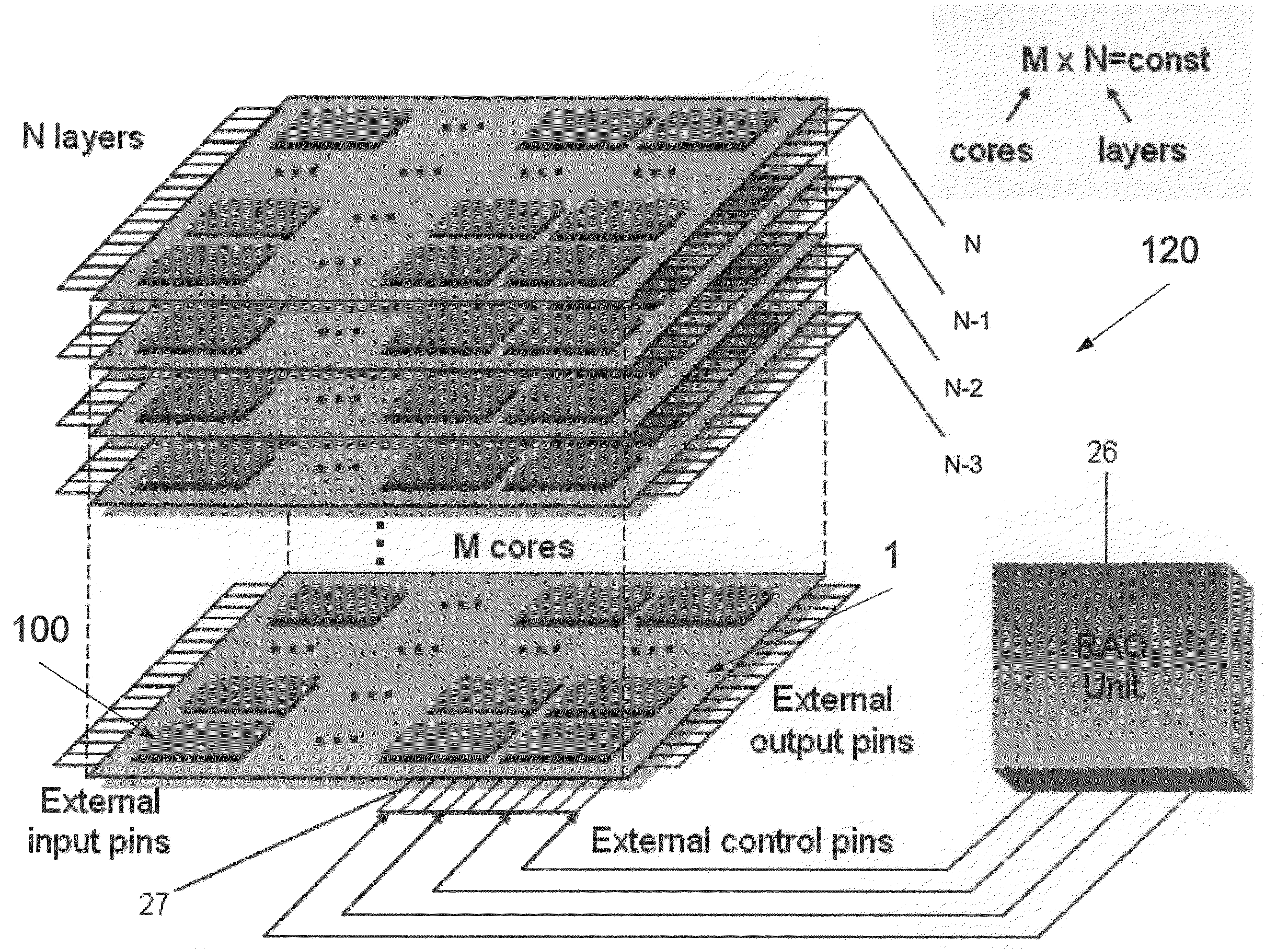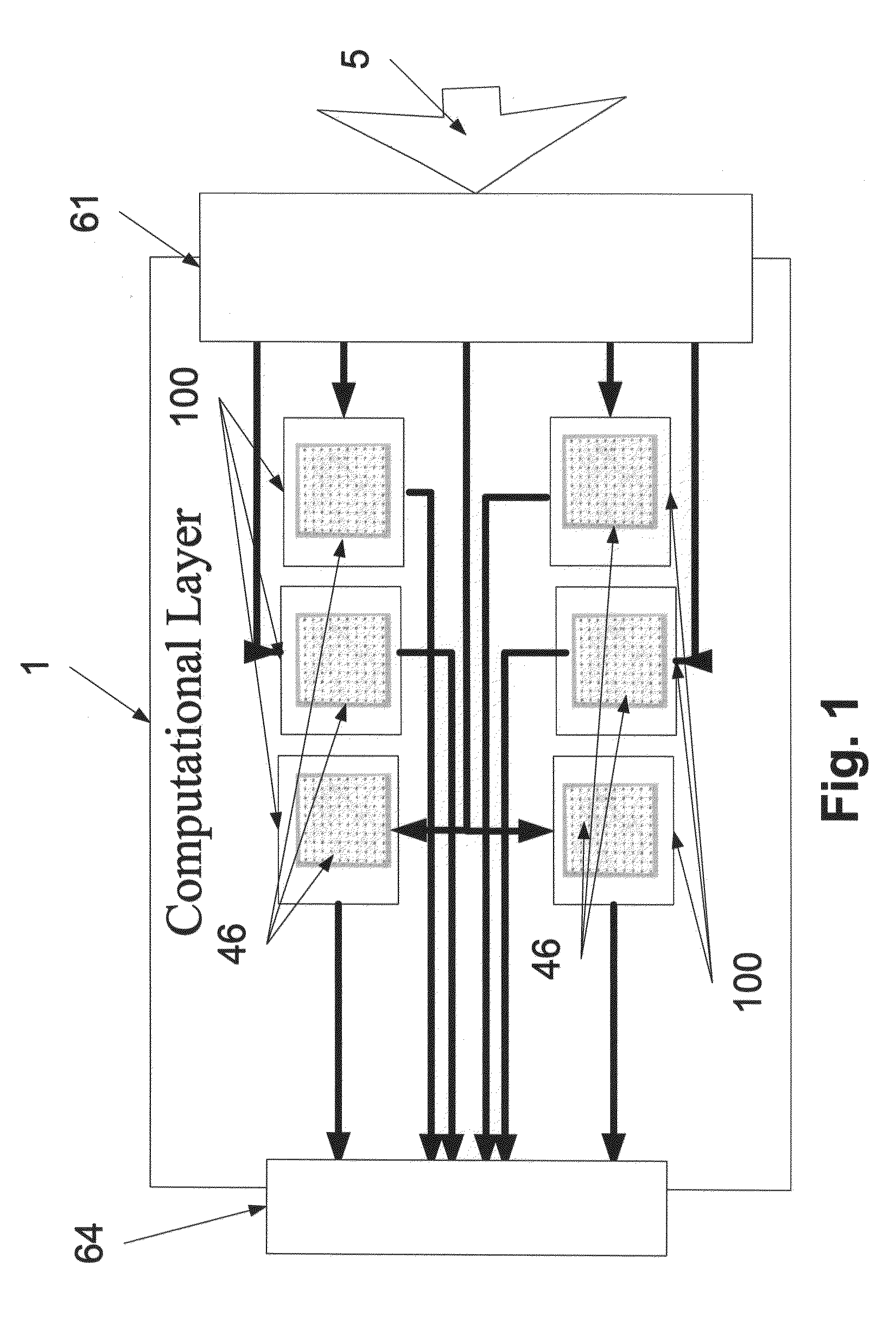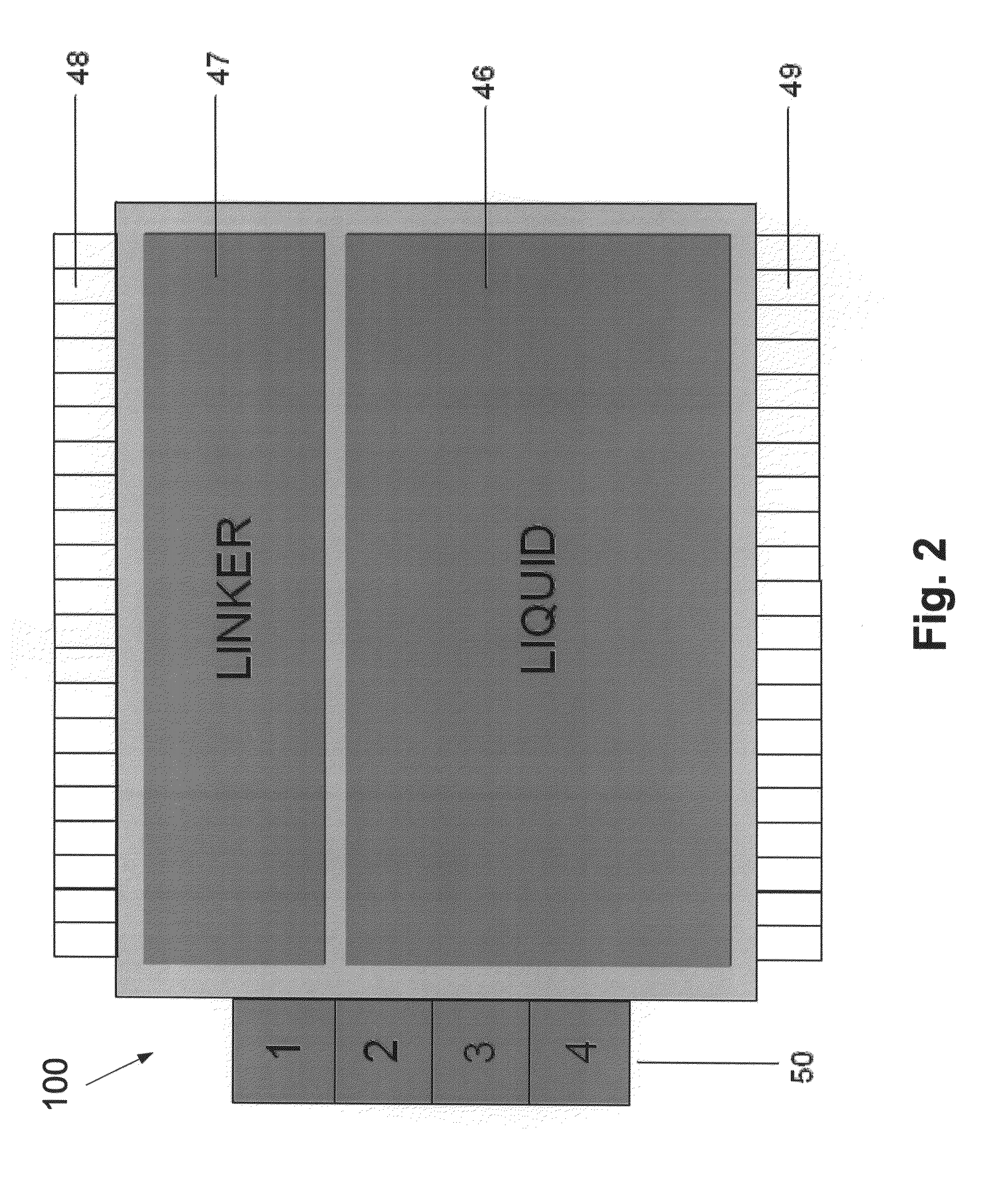Computing Device, a System and a Method for Parallel Processing of Data Streams
a data stream and computing device technology, applied in multimedia data querying, physical realisation, instruments, etc., can solve the problems of high computational complexity of tasks based on analysis of real world signals, complex structure and relationships, and large quantities of noisy data. , to achieve the effect of the computing process usually requires high computational power and energy source power
- Summary
- Abstract
- Description
- Claims
- Application Information
AI Technical Summary
Benefits of technology
Problems solved by technology
Method used
Image
Examples
Embodiment Construction
[0119]The present embodiments comprise an apparatus, a system and a method for parallel computing by simultaneously using a number of computational cores. The apparatus, system and method may be used to construct an efficient proactive computing device with configurable computational cores. Each core comprises a liquid section, and is preprogrammed independently of the other cores with a function. The function is typically random, and the core retains the preprogrammed function although other aspects of the core can be reprogrammed dynamically. Preferably, a Gaussian or like statistical distribution is used to generate the functions, so that each core has a function that is independent of the other cores. The apparatus, system and method of the present invention are thus endowed with computational and structural advantages characteristic of biological systems. The embodiments of the present invention provide an adaptively-reconfigurable parallel processor having a very large number ...
PUM
 Login to View More
Login to View More Abstract
Description
Claims
Application Information
 Login to View More
Login to View More - R&D
- Intellectual Property
- Life Sciences
- Materials
- Tech Scout
- Unparalleled Data Quality
- Higher Quality Content
- 60% Fewer Hallucinations
Browse by: Latest US Patents, China's latest patents, Technical Efficacy Thesaurus, Application Domain, Technology Topic, Popular Technical Reports.
© 2025 PatSnap. All rights reserved.Legal|Privacy policy|Modern Slavery Act Transparency Statement|Sitemap|About US| Contact US: help@patsnap.com



